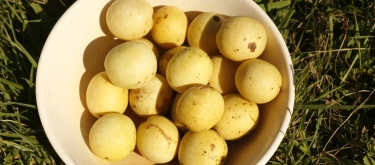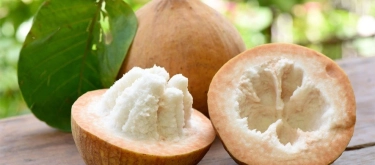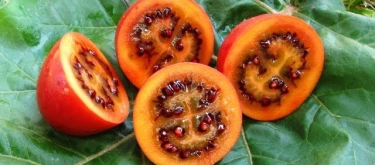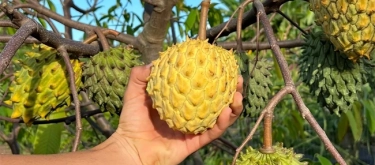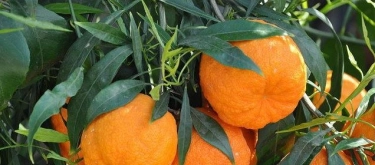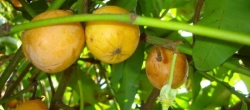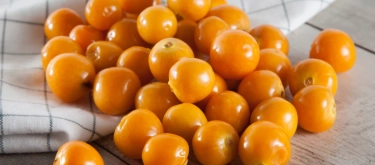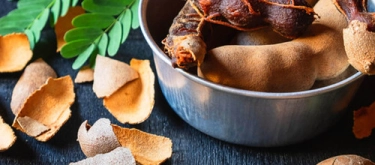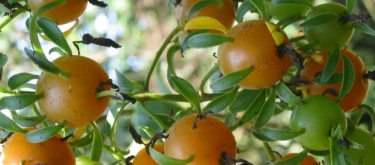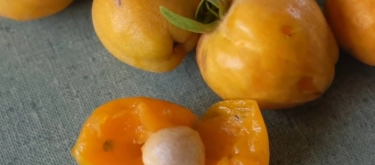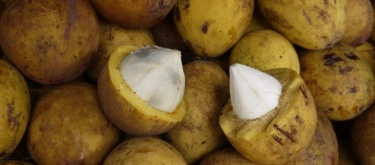Strichnos: Taste Profile, Aroma, Benefits and Health Risks
Strychnos (Monkey Orange, Natal Orange, Strychnos spinosa) is a tropical fruit native to Africa, particularly common in southern and eastern regions. Known locally as "Monkey Orange" due to primates' fondness for its ripe fruits, it has historically provided nutritional sustenance and holds significant cultural importance across African communities.
Strychnos fruits (Monkey Orange) should be consumed fully ripe, as unripe fruits and seeds contain toxic alkaloids that may cause serious poisoning. Individuals sensitive to alkaloids or those prone to allergies should exercise caution. Pregnant women should avoid consumption due to potential toxicity risks.
What does Strichnos taste like?

Complete Sensory Description:
Taste
The ripe Strychnos fruit possesses a sweet-sour, pleasantly tangy flavor, reminiscent of citrus fruits combined with tropical sweetness, occasionally accompanied by slightly bitter undertones.
Aroma
Its aroma is distinctly fruity, fresh, and mildly tropical, suggesting notes similar to citrus zest, mango, and subtle hints of pineapple.
Texture
Externally, the fruit has a hard, woody shell; inside, the edible pulp is juicy, gelatinous, and fibrous, often enclosing multiple hard seeds.
Appearance
Strychnos fruits are spherical and range from 5 to 12 cm in diameter, featuring a thick, hard shell colored yellow to orange when ripe. Inside, the pulp is vivid yellow-orange, surrounding numerous embedded seeds.
In-depth Flavor Analysis:
The flavor profile of Strychnos fruits is significantly influenced by its biochemical composition, dominated by organic acids like citric, malic, and tartaric acid, which account for its tangy, citrus-like acidity. Sugars, primarily sucrose and fructose, are responsible for its pronounced sweetness, balancing its acidic nature. Alkaloids, such as strychnine and brucine, present primarily in seeds and unripe fruits, impart bitterness and pose toxicity risks, emphasizing the importance of proper ripening. The aromatic profile arises from volatile organic compounds (VOCs), including limonene, α-pinene, and ethyl butyrate, lending the fruit its citrus-mango scent. Environmental factors such as soil composition, climate, and ripeness stage significantly impact the concentration of these compounds, resulting in slight regional flavor variations.
Varieties and Culinary Applications:
There are multiple species within the Strychnos genus, with Strychnos spinosa being the most common edible variety. Culinary uses include:
- Fresh Consumption: Fully ripe fruits are consumed raw, primarily scooped directly from the shell.
- Beverages: Popularly fermented into refreshing, mildly alcoholic traditional beverages.
- Jams and Preserves: The pulp’s consistency makes it ideal for jams, sauces, and chutneys.
- Desserts: Incorporated into ice creams, sorbets, fruit salads, and desserts for its unique flavor combination.
Selection and Storage:
When selecting Strychnos fruits, choose specimens that are uniformly orange-yellow, without green patches indicating incomplete ripeness. The shell should be intact, hard, and free from cracks or molds. Store whole fruits at room temperature in dry, ventilated conditions away from direct sunlight. Once opened, the pulp should be refrigerated and consumed within 2-3 days.
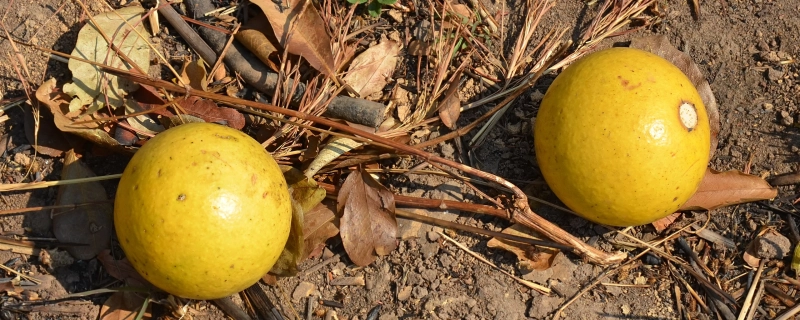
Nutritional Insights:
Strychnos fruits are a valuable source of vitamins (notably vitamin C), dietary fiber, and antioxidants, contributing positively to immunity and digestion. The fruit’s bioactive compounds, including flavonoids and phenolic acids, may provide anti-inflammatory and protective benefits. However, precise nutritional values may vary by region and maturity.
Expert Insights & Culinary Tips:
- Ripeness Check: Experts recommend gently shaking the fruit; ripe fruits produce a slight internal rattle, indicating detachment of seeds from the pulp, signaling perfect ripeness.
- Preparation Tip: Always discard seeds carefully due to their toxic content. Utilize the pulp immediately or preserve it by freezing if future use is intended.
- Flavor Pairing: The unique citrus-tropical flavor complements coconut, mango, passion fruit, lime, honey, and yogurt exceptionally well.
Interesting and Curious Facts:
- The genus name "Strychnos" derives from the Greek "strychnon," meaning bitter or astringent, reflecting the bitter compounds present in seeds and unripe fruits.
- Traditionally, Strychnos shells are crafted into durable utensils, cups, and musical instruments by local communities.
- Indigenous African tribes historically used seeds for medicinal and ritualistic purposes, emphasizing caution due to their toxic potency.
Harm and Dietary Considerations:
Extreme caution must be exercised regarding seeds and immature fruits, as they contain toxic alkaloids (notably strychnine) capable of causing severe neurological poisoning and even death. Pregnant women, breastfeeding mothers, children, and individuals with liver or kidney disorders must strictly avoid consumption of seeds and unripe fruits.
Religious Dietary Considerations:
Strychnos fruits do not conflict with religious dietary laws such as Halal, Kosher, or Hindu vegetarianism, provided the fruit is ripe and seeds are avoided. There are no specific religious restrictions concerning this fruit.
Final Thoughts & Sensory Journey:
Exploring the taste of Strychnos is a sensory journey of contrasts: sweet meets sour, aromatic meets subtly bitter, caution meets culinary pleasure. Its unique and intriguing flavor profile, combined with historical and cultural depth, makes Strychnos an extraordinary fruit deserving exploration, albeit with respect for its powerful nature.
Resources:
- "Food Plants of Africa" by Ben-Erik van Wyk (Briza Publications, 2005)
- "Edible Medicinal and Non-Medicinal Plants" by T.K. Lim (Springer, 2012)
- "Fruit and Vegetable Flavour: Recent Advances and Future Prospects" edited by B. Brückner and S.G. Krueger (Woodhead Publishing, 2008)
